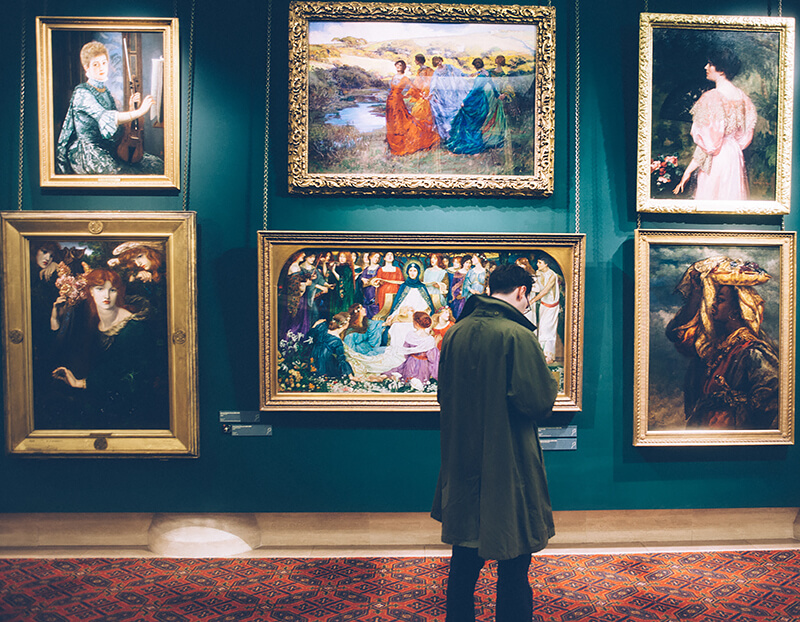The Emergence of Online Art Fairs
Art fairs are evolving with technology, expanding beyond physical spaces into the digital realm. Virtual platforms now offer 3D walkthroughs and interactive features, allowing art enthusiasts worldwide to explore galleries from home. This shift benefits emerging artists by providing access to global audiences.
The Dallas Art Fair Online, for example, used webinars and virtual tours to connect collections with potential buyers. While online fairs offer advantages, they also present challenges. The lack of tangible art experiences can be a drawback, but augmented reality tools are helping to bridge this gap by offering closer approximations to viewing art in person.
Events like the SPARK Art Fair Vienna have embraced digital storytelling to provide comprehensive narratives behind solo presentations. However, technical issues and varying levels of digital literacy remain hurdles for organizers to address.
The global reach of online fairs promotes cultural exchange and diversity in art, allowing galleries from remote areas to showcase alongside renowned institutions. This intersection of tradition and innovation opens up exciting possibilities for both artists and audiences.
Key Features of Virtual Art Shows
Interactive elements are crucial in engaging virtual art shows. Live artist Q&A sessions mimic in-person connections, while virtual tours offer guided journeys through exhibition spaces. 3D virtual galleries allow viewers to explore digital spaces, zooming in on details or moving past larger installations.
Digital storytelling enhances the connection between artist and audience by providing context through:
- Video clips
- Interviews
- Behind-the-scenes content
This approach builds emotional connections and encourages deeper engagement with the artworks.
Augmented and virtual reality tools further elevate the experience, allowing viewers to see artworks in virtual environments that echo real-world spaces. These features help collectors and enthusiasts better understand an artwork's scale, texture, and spatial dynamics.
By combining these elements, virtual art fairs create meaningful interactions between artists and audiences, showcasing the promising future of online art communities.
The Impact on Artists and Collectors
Virtual platforms have expanded opportunities for artists and collectors alike. Artists can now reach global audiences without geographical constraints, potentially elevating emerging talents who might struggle in traditional settings. This expanded visibility fosters a more inclusive art market.
For collectors, online art fairs democratize art acquisition. The convenience of virtual platforms, combined with sophisticated digital viewing tools, allows potential buyers to explore and make informed decisions from home. This accessibility reshapes the economics of the art market by eliminating travel costs and other expenses associated with traditional fairs.
However, challenges remain. Some artists worry about losing the energy of in-person interactions, while collectors express concerns about not physically examining works before purchasing. Advancements in virtual and augmented reality aim to address these issues.
"If you are new in the business, AFSB can be a real time saver." – Paul Lambrecht (Wood)
Despite these challenges, the digital landscape offers new territories for both artists and collectors to explore and thrive. As the art world continues to evolve digitally, embracing this change will ensure a rich and dynamic dialogue between creators and admirers.
Future Trends in Art Fair Digitization
The future of art fair digitization promises innovative ways for audiences to interact with art. Augmented reality (AR) and virtual reality (VR) technologies are set to redefine the virtual art fair experience.
Imagine AR enhancing exhibits with interactive content, turning each piece into a personal storytelling journey. VR could create immersive environments that rival or surpass physical venues, allowing collectors to explore digital spaces and engage intimately with artworks.
The convergence of AR and VR might foster collaborations among artists, technologists, and curators, resulting in customized, interactive galleries that evolve with the artist's vision. Blockchain technology could ensure artwork authenticity and streamline transactions in digital spaces.
As these technologies advance, organizers must balance sophistication with user-friendliness to ensure equitable participation. The potential to engage new audiences and redefine artistic limits continues to expand, promising a vibrant future for the dialogue between creator and viewer.
As the digital landscape reshapes art experiences, the fusion of technology and creativity offers a dynamic space for artists and collectors. This new frontier expands accessibility and enriches the dialogue between creators and admirers, promising a vibrant future for art in all its forms.
- Art Fair SourceBook. AFSB Online Tracking System. 2023.
- Lamunière S. Out of Bounds: Cultural Intersections in Contemporary Art. Art Paris, 2025.
- Garton N. The Other Art Fair: Celebrating 100 Editions. Saatchi Art, 2023.
























